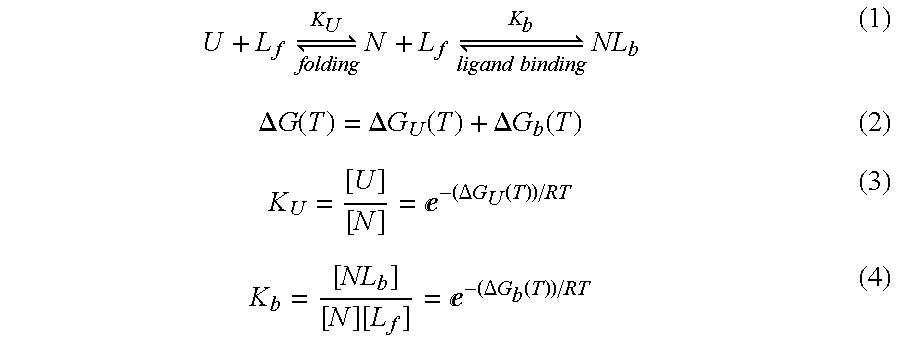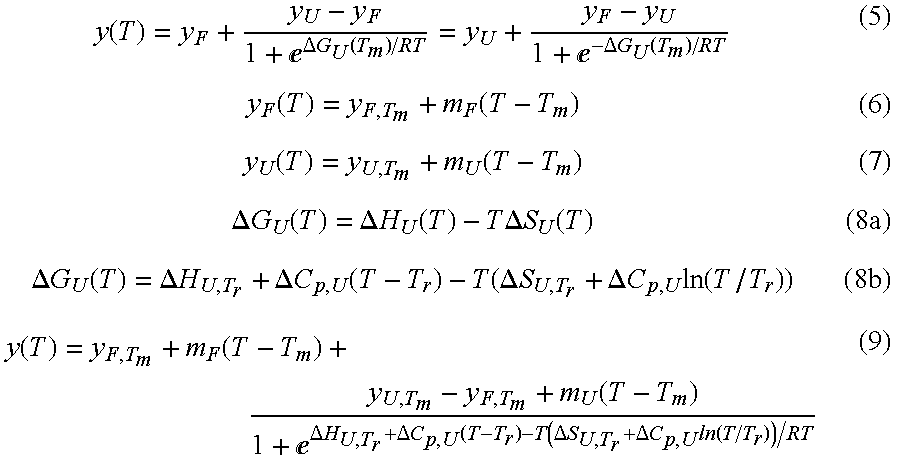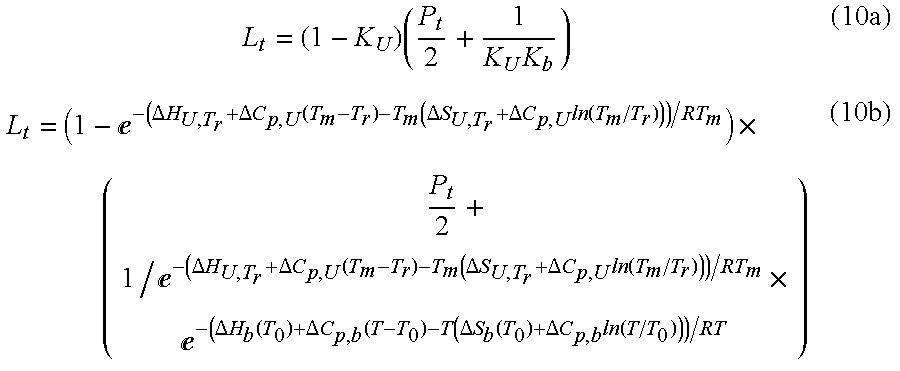Assay for evaluating affinity and specificity of ligand-albumin binding
a technology of affinity and specificity, applied in the direction of chemiluminescene/bioluminescence, instruments, material analysis, etc., can solve the problems of inability to apply thermofluor®, inability to detect ligand-albumin binding affinity and specificity,
- Summary
- Abstract
- Description
- Claims
- Application Information
AI Technical Summary
Benefits of technology
Problems solved by technology
Method used
Image
Examples
example 1
[0074]Human Serum Albumin (HSA), with the amino acid sequence of Accession number NM 000477.4, was purchased from Sigma (A-9511). Bovine Serum Albumin (BSA), with the amino acid sequence of Accession number NM 180992.2, was purchased from Sigma (A-7638). Rat Serum Albumin, with the amino acid sequence of Accession number NM 134326.2, was purchased from Sigma (A-6414). Mouse Serum Albumin, with the amino acid sequence of Accession number NM 009654, was purchased from Sigma (A-3559). The above albumins were prepared using method IV of Cohn et al. (J. Am. Chem. Soc. 69: 1753-1761, 1947) and purified with 1× crystallization. The purity of the albumins ranges from about 97% to about 99% as determined by agarose gel electrophoresis.
[0075]The fluorescent molecule of 1,8-ANS was purchased from Invitrogen (catalog number A-47). Silicone oil was purchased from Sigma (catalog number 85411).
[0076]The compounds, except Iodopanoate, were obtained from Sigma (Saint Louis, Mo.). Iodopanoate was obt...
example 2
[0079]A serial dilution of about 0.019625, 0.03925, 0.0785, 0.1565, 0.3125, 0.625, 1.25, 2.5, 5, 10, and 20 mM of warfarin or flurbiprofen in 100% DMSO was prepared. About 50 nLs of the compounds were dispensed into a black 384-well polypropylene microplate (Abgene: TF-0384 / k) using a Hummingbird capillary liquid handling instrument (Genomics Solutions). Then about 4 μLs of 1× reaction mixture described in Example 1 was added into the plate so the final assay volume is about 4.05 μLs in each well. To prevent evaporation, about 1 μL at of silicone oil was added to the plate using multichannel pipettors. The final concentration of warfarin or flurbiprofen in each sample was about 0.244, 0.488, 0.977, 1.95, 3.91, 7.81, 15.6, 31.3, 62.5, 125, or 250 μM.
[0080]The plates were loaded onto a ThermoFluor device and heated from about 25° C. to about 95° C. at a ramp-rate of about 1° C. per minute. Fluorescence was measured by continuous illumination with UV light (Hamamatsu LC6) via fiber opt...
example 3
[0083]A stock solution of about 10 mM of warfarin, phenylbutazone, salicylate, indomethacin, tolbutamide, chlorpropamide, iophenoxate, sulfadimethoxine, sulfathiazole, furosemide, tenoxicam, valproate, quercetin, clofibrate, ketoprofen, iodopanoate, ibuprofen, s-naproxen, chlorothiazide, diclofenac, carprofen, norharmane, flurbiprofen, L-tryptophan, octanoate or indoxylsulfate was prepared in 100% DMSO. A serial dilution of about 0.00983125, 0.019625, 0.03925, 0.0785, 0.1565, 0.3125, 0.625, 1.25, 2.5, 5, and 10 mM were prepared from the stock solution. About 50 nLs of the above compounds were dispensed into a black 384-well polypropylene microplate (Abgene: TF-0384 / k) using a Hummingbird capillary liquid handling instrument (Genomics Solutions). Then about 4 μLs of 1× reaction mixture described in Example 1 was added into the plate so the final assay volume is about 4.05 μLs in each well. The final concentration of the above compounds was about 0.244, 0.488, 0.977, 1.95, 3.91, 7.81,...
PUM
| Property | Measurement | Unit |
|---|---|---|
| molecular weight | aaaaa | aaaaa |
| pH | aaaaa | aaaaa |
| pH | aaaaa | aaaaa |
Abstract
Description
Claims
Application Information
 Login to View More
Login to View More - R&D
- Intellectual Property
- Life Sciences
- Materials
- Tech Scout
- Unparalleled Data Quality
- Higher Quality Content
- 60% Fewer Hallucinations
Browse by: Latest US Patents, China's latest patents, Technical Efficacy Thesaurus, Application Domain, Technology Topic, Popular Technical Reports.
© 2025 PatSnap. All rights reserved.Legal|Privacy policy|Modern Slavery Act Transparency Statement|Sitemap|About US| Contact US: help@patsnap.com



